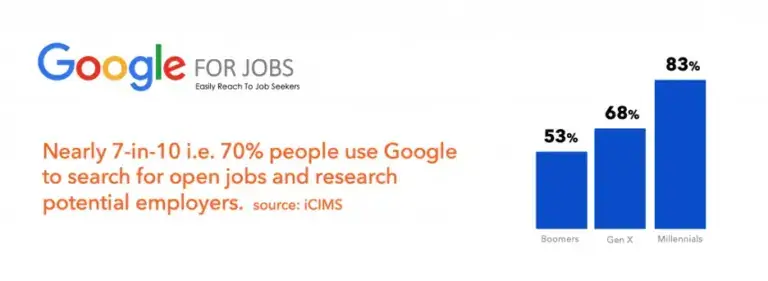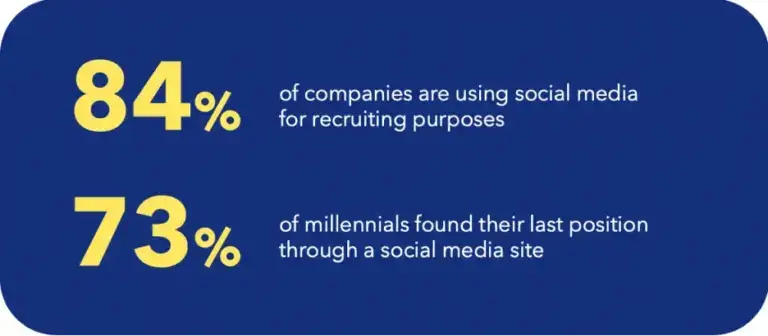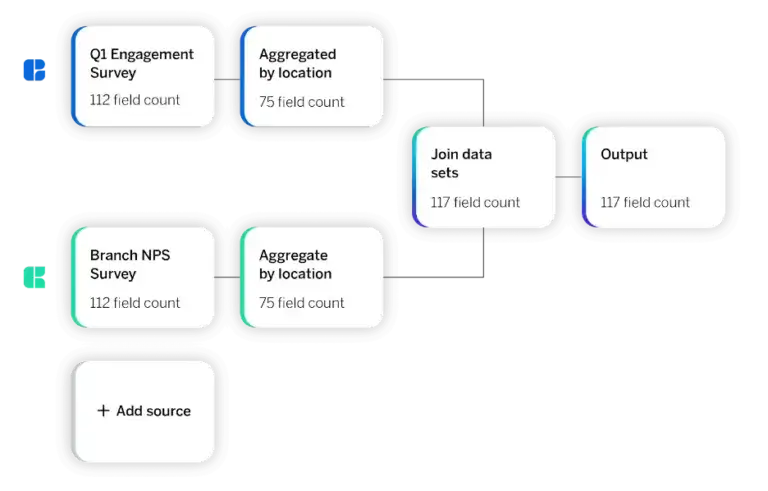Employer branding is how organizations differentiate themselves in the labor market to attract and retain talent. This article will help you understand what constitutes an employer brand, why it matters, and how tech can help you create a strong one for your organisation.
You’ve created a compelling product brand story that effectively sells your products or services. How do you make your organisation’s brand as compelling to attract and retain the best talent?
One survey by McKinsey found that there’s a significant relationship between good talent management and organisational performance. 99% of respondents who said their organisation had very effective talent management reported outperforming their competitors, compared with 56% of other respondents.
This is where your company’s employer branding and employer value proposition (EVP) come in.
Free eBook: 2023 state of HR report
What is employer branding?
Employer branding is how an organisation markets itself to both internal and potential employees. It’s how the outside world sees an organisation – as an employer rather than a supplier. It’s reputational, based on how it treats its employees, how the employees feel about working there, and its company culture.
If you were to ask a current employee what it’s like to work for an organisation, they’re unlikely to focus on what’s produced. Instead, they’ll talk about management, conditions, culture, and values. This is the employer brand – the things that will convince someone to come and work at, or stay at the organisation; not what it sells.
To hire and retain top job seekers, your employer brand needs to create, and tell, a compelling company story that’s then shared by the people who work there. The ‘show, don’t tell’ device of storytelling is never truer than here – simply telling people your organisation is great is not enough – you, and your employees as your best advocates, must show that it is through the employer brand and employee branding.
Why is employer branding so important?
A company’s reputation is everything when it comes to attracting top talent. 79% of UK adults are less likely to buy from a company with a poor reputation, and this reputation includes how that company treats its staff. 50% of job seekers would not work for an organization with a negative brand, even if paid more.
Investing in your employer brand is critical for your business’s bottom line and delivers a substantial return on investment (ROI). Hiring good people is expensive – up to $17,000 – you don’t want to lose them to a competitor after a year.
At an average of 36 days to hire, it can be time-consuming for HR to recruit one person. With good employer branding, top talent knows that you are a great place to work and comes knocking on your door.
What’s the difference between employer branding and employee branding?
| Employer Branding | Employee Branding | |
|---|---|---|
| What is it? | How your organisation represents itself as an employer, projecting an image to attract and retain top talent. | How your employees and potential employees perceive your organisation as a place to work (good or bad). |
| Internal or external? | External – the face your organisation presents to the world. | Internal – the face your organisation presents to the workforce. |
| Driven by? | Leaders and HR | Employees themselves |
| Influenced by? | The organisation’s mission, vision, values, culture, benefits, and career opportunities. | Employee experience, employee engagement, internal communications, satisfaction, morale, loyalty, advocacy. |
What is an employer value proposition (EVP)?
To create an effective employer brand, you’ll need an effective employer value proposition. An EVP is the offering to current employees and potential job seekers that makes you a desirable employer.
It needs to be uniquely good to make top talent passionate enough to choose you over your competitors or elect to stay with you, and it has to be true and representative.
Your EVP should ideally offer five elements:
1. Opportunity
How employees can grow and develop their careers at your organisation: training or sponsored courses; business travel; scope to work abroad; the potential to work on prestigious, innovative projects, and promotion prospects.
2. People
How good the leaders, managers, and co-workers are, and the general working atmosphere: the level of trust and collaboration; how well teams support and communicate with each other; positive relationships across hierarchies, and strong company culture.
3. Organization
The company’s prestige as a ‘great employer’ in its particular market needs to come from more than just holding a great market position for its product or service.
It also needs to look at diversity and inclusion, employee empowerment, ethics, environmental and social responsibility, formality (or informality) of the workplace, and investment in technology and systems.
4. Work
How meaningful, challenging, and fulfilling the job is: its impact on the bigger picture; alignment of the job spec with business requirements; work-life balance with flexible working or hybrid; recognition for effort and achievement.
5. Reward
The salary, bonuses or share options; benefits such as medical insurance, company car, pensions, gym memberships, paid leave, free canteen. Offering an attractive salary isn’t enough. Potential candidates are often more energised by your company’s purpose and positive impact.
What’s the link between employer branding and the employer value proposition?
Employer branding is external – and unwritten. Every company has an employer brand by default, good or bad: it’s how current employees, leavers, retirees, and potential recruits regard it and talk about it based on their experience of actually working there or having dealings with it.
Your EVP is internal – and written, stating, ‘This is what we can offer you as an employee’.
When an organisation can align the external with the internal, i.e., great employer branding and an enviable EVP, it’s a recipe for attracting and retaining top talent.
How do you build a strong employer branding strategy?
An employee branding strategy takes your organisation from where it is currently, to your desired goals. It should:
- be documented and easy to understand
- include metrics that can track progress
- be a record – containing agreements and relevant information
- be continuously added to
- be consulted about the organisation’s unique attributes, corporate brand messaging, mission, and EVP
1. Decide what makes your organiszation unique
Be absolutely clear about what your organisation stands for – its unique value proposition.
It should be relevant, valuable, and different from the competition.
Refer to your:
- Company vision
- Company mission statement
- Company values
- Company culture and
- Business needs
Then decide what type of talent you need to attract to chime with these objectives.
2. Make onboarding reflect a strong employer brand
What happens during onboarding sets the stage for an employee’s entire career with your company. An exciting and strong employer brand attracts a talented new hire, and it’s important that their onboarding develops that positive connection.
Only 12% of employees strongly agree that their organisation does a great job of onboarding. A nervous new hire thrown into work immediately with no context or training, proper introduction to the rest of the team, or managerial feedback may well end up being one of the 50% of employees who leave within the first 18 months.
It’s crucial that new employees are welcomed, appreciated, and rapidly made to feel they belong, in line with your employer brand.
- Don’t go silent on a new hire in the period between job offer acceptance and first day: check-in by phone and dispense with first-day paperwork tedium by asking them to complete it at their leisure and send it through before they start.
- Plan the first day: set up a new employee’s desk, ID badges, tech, accounts, and passwords; give a welcome pack with swag and cards from the team; pay for a team lunch; introduce them to the whole company and begin to embed the culture from the get-go. Include some meaningful work.
- Set a full schedule for the first week or so the new hire is not left wondering what to do next. This could include 1:1s with people in every department so the recruit can see how their role fits within the wider organisation.
- Appreciate that nobody ‘hits the ground running’: successful onboarding takes time, together with clear, realistic, short and long-term goal setting and managerial support.
- Run onboarding feedback surveys to find out what worked and what didn’t for new recruits.
3. Keep the pulse on your external employer brand image
You can analyze the following sources for information as part of an employer brand audit. See how well your employer branding efforts are received, and what change opportunities there are to support your company’s reputation:
Employee feedback
You’ll probably be using surveys as part of your employee engagement program. Redeploy them to help you identify what’s great about your company and problems that might be affecting your ability to attract and retain talent.
Three surveys you can repurpose are:
eNPS
‘On a scale from 0-10, how likely are you to recommend our brand/company to a friend or colleague?’ This simple survey is ideal for gauging workforce sentiment as part of your wider employer branding strategy.
Pulse surveys
Frequent and quick, these are particularly useful to collect employee experience feedback about specific topics, such as employer brand perception.
360 surveys
These offer the chance for employees to give and receive feedback from their manager, peers, direct reports, as well as themselves, and can highlight deeper issues.
Employment review sites such as Glassdoor and Indeed
53% of workers or job seekers look for information on a company they are considering working for on job search websites. And:

Image credit: Top Recruitment Statistics and Trends For 2022 – CVViZ
Ask yourself these questions:
- What is your star rating?
- What are people saying about your company?
- What are positive reviews highlighting?
- Are there any negative reviews and, if so, have you addressed the gripes effectively?
Social media
Commentators on social media don’t hold back, whether on your own social media accounts or via #hashtags and mentions.

Image credit: Top Recruitment Statistics and Trends For 2022 – CVViZ
Use conversational analytics software to track those mentions of your organization over social media using social media searches, to gain a deeper insight into how people view your company.
4. Publicise your EVP
You’ve formulated a great employer value proposition, and now it’s time to get it out there. Make sure your employer branding efforts extend to communicating through your website, recruitment literature, LinkedIn company page, and HR department.
It takes more than one channel to change the market’s perception of your company or employer brand. Use a wide variety of messaging: blogs, sponsored content, videos, photos, interviews, talks, slideshares, and slideshows.
Showcase recruitment marketing topics that matter most to potential candidates on your company’s social media channels – diversity, professional development, social responsibility, environmental policy, and corporate culture.
While you’ll need to mention rewards in your EVP, the main focus should be on your company’s deeper purpose and how it’s helping to change the world.
Let your employees become your advocates through their employee branding
Nobody knows what it’s like to work at your company better than your employees, who can offer an authentic perspective on their experience to prospective candidates.
Put testimonials or well produced video interviews of existing employees talking about their experiences on your website, social media, and recruitment channels.
Harness the power of (willing) employees’ personal social media; people are more likely to trust a company based on what its employees say on social media rather than advertising.
You could ask employees to post when the company does important or fun things such as charity or special interest events, giveaways or awards, perhaps with specific, all-channel #hashtags for the events. Asking for employee referrals also helps.
3 examples of companies with great employer branding
1. Adobe
Adobe has a strong employer brand, based on its mission statement: ‘Let’s create experiences that matter.’
They focus on the experience of the end-user of their products and how well the customers can achieve their goals. This customer-first approach resonates with the staff there – Adobe’s mission, vision & values motivate 93% of Adobe employees.
When asked ‘To whom do you feel most loyal at work?’, employees ranked their co-workers in top position with 36% of responses, indicating that staff enjoy collaborating and being ‘all in it together, with each other’.
This is also evidenced in its diversity award status and ‘best workplace’ award:

Image from adobe.com
2. Google
No list of positive employer brands would be complete without mentioning Google’s culture that aims to take care of the needs of its employees so that they can take care of the work without distraction.
This has led to the offices being notorious for their great employee services – free food, laundry services, gym, and games, plus much more. Some offices even have a slide.

Image from bussinessinsider.com
Ultimately, these great perks have produced an employer brand image that is so enticing and exciting that keeps applications coming in (3 million resumes a year!) and employees staying in post for long periods of time.
According to Comparably, ‘Google is in 1st place of similar-sized companies in its ability to retain quality employees. 58% of employees would not leave Google if they were offered a job for more money while 80% are excited to go to work each day.
3. Netflix
Ranked #2 in Global Top 100 Brands, Netflix is well known for its exceptional parental leave policy as part of its unique employer brand. The employees that are full-time can take paid and unlimited parental leave, which is unheard of in some companies.
The focus on the family and taking time off to rebalance and unwind is so embedded into the culture, that even the CEO Reed Hastings is known for taking off six weeks every year.
Current and future employees can enjoy Netflix service perks, as well as free lunches, dental, medical healthcare plans, and a generous payout of $1.5million for employee death in service.

Image from whats-on-netflix.com
How can you measure your employer branding process?
A good employer branding strategy costs money, and it’s important that you measure its return on investment.
There are several metrics you can use to calculate how successful yours has been:
Employee retention – A traditional HR standard to discover the percentage of happy employees, work-related issues on your employees’ minds, and to identify what changes are needed to improve morale.
Employee engagement – Regular eNPS, Pulse, and 360 surveys keep track of how well a workforce is functioning.
Cost-per-hire – External recruiting costs (e.g. recruitment software, agency fees, expenses, advertising, vetting fees, interview time) and internal recruiting costs (e.g. HR dept, HR training and development, hiring manager costs, referral bonuses) divided by the number of hires in a time period.
Brand awareness How familiar people are with your employer brand through its attributes or images.
Quality of candidate – an experienced HR team will be able to give quantifiable feedback on the quality of applicants.
But you don’t have to set up all these separately…
How Qualtrics® can help you build a strong employer brand
However large or small your organisation, you’ll need to invest time and money in your employer branding to attract and retain good job seekers. Only companies who consider employer branding important, and strive to get it right will be able to snap up the best talent.
Our CrossXM solution gives your leaders automated insights into how employee (EX), customer (CX) and brand (BX) experiences impact one another.

Cross XM can channel all your employee experience scores, customer experience metrics, operational data, revenues, and a whole raft of experience KPIs into one action planning tool.
Once in the tool, CrossXM applies analytics to the data to surface the most significant drivers of positive positive customer, employee, and brand outcomes, identifying specific customer experiences that will most impact your brand equity.There’s also a benchmark library so you can see where you sit against other brands in your market.
It helps you understand how key employee experience metrics, such as manager support, career development and recognition, have a direct, statistically significant impact on customer experience – and hence the bottom line. With these insights, you’ll be able to focus on actions that will drive the most value for employees and customers – and your employer brand.
Free eBook: 2023 state of HR report